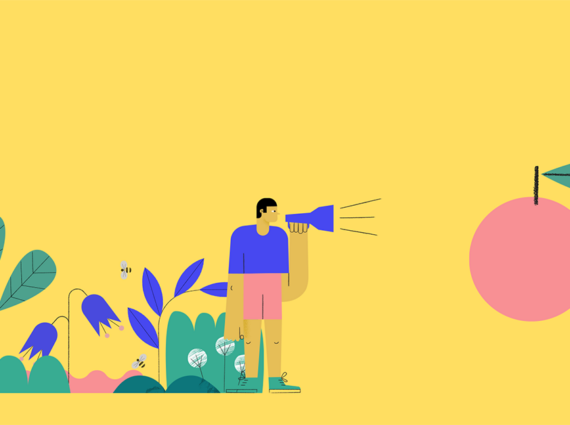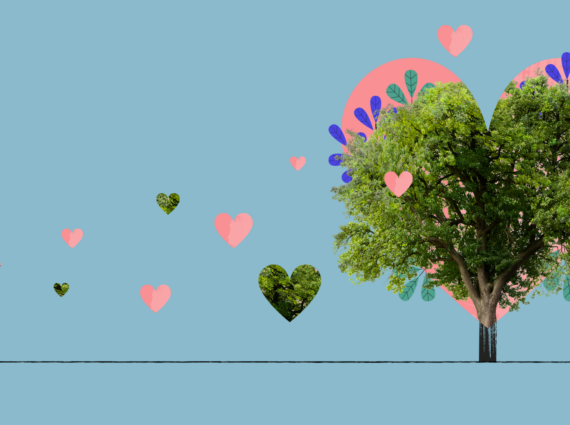TERbit is the first such app in the world. We’re not at all surprised that new users are asking us lots of questions. In this article, we try to answer most of these doubts that have arisen so far. If you would like to learn more, or if this text does not answer your questions, message us at [email protected]. We are looking forward to hearing your opinions!
What are those TERs, that I can collect in the application?
1 TER corresponds to 1 tonne of CO2 that has not been emitted into the atmosphere thanks to your green choices. It takes a lot of time and plenty of low-emission activities to save 1 tonne of CO2. Each TER consists of 1,000 mTERs: each mTER is 1 kilogram of CO2 that has not been emitted to the atmosphere thanks to your efforts, such as by biking, walking, or using public transport instead of driving a car. The TER counting system has been audited by a team of international scientists and patented in the United States.
Do my personal CO2 savings matter from a global perspective?
When you’re using TERbit, your eco actions are summed up and added to a shared pool of eco individuals. In addition, each TERbit user can see how much CO2 they save by reducing their emissions. The statistical Pole emits just over 8 tonnes of CO2 per year. This depends on what we eat, how we travel, where we spend our vacations, and how warm we keep the house when using air conditioning or heating. To see if you emit more or fewer greenhouse gases than the statistical Pole, check our free calculator for individuals in the SHORT or FULL version.
Why create an entire app dedicated to greenhouse gas reduction?
Humanity is facing a huge global challenge. Climate change results from the way we exploited the Earth’s resources over the past few decades. Scientists agree 100%: climate change results from human activity after the industrial revolution. In half a century, we have “managed” to destabilize every ecosystem on the planet.
“Average temperatures on Earth have risen by 1.2 degrees Celsius” – it doesn’t turn on a red light, right? Well, it should. 1.2 degrees for the Earth is almost as much for humans. We can metaphorically say that the Earth is currently suffering from fever. By extracting fossil fuels and burning them en masse, we have changed the seasons, the habitats of animals, and the growing seasons of plants. Nature is trying to keep up with us but is succeeding only marginally. By exploiting the Earth beyond our means, we incur a debt that we can either repay today on our own terms or in a few years on terms dictated harshly by nature. Today, we still have a choice. If we want to seize this opportunity, we must drastically reduce greenhouse gas emissions globally.
Why should I give up my car when the big corporations emit much more CO2 than I do anyway?
Changes in how we use the Earth’s resources must proceed in multiple ways. What’s more: they are already happening on many levels.
Humanity operates in a closed loop. Our consumer decisions influence producers of goods and service providers. Likewise, the availability of solutions determines how we use them.
Perhaps some of our readers recall the vegetarian food variety and availability in Poland 20 years ago. In large cities, tofu and unappetizing soy cubes popped up on the shelves. Over the years, with the development of awareness and the increasing number of people limiting their meat intake, the range of products offered by manufacturers has expanded, enabling the development of new technologies and broadening the availability of new products. A decade ago, plant milk (usually soy) was a rarity with a price tag several times that of cow’s milk. Today, you can get it at any discount store at the same price as cow’s milk; what’s more: you can choose from soy, oat, coconut, pea, almond, sweetened, unsweetened, flavored, etc. We can also choose from an array of meat substitutes, which are not only healthy and environmentally friendly: thanks to them, far fewer greenhouse gases make it into the atmosphere than in meat production. This example shows that everyone’s choices matter and that corporations respond to our purchasing choices.
It’s also worth knowing that large companies are reaching the obligation to report and reduce their carbon footprint imposed by international legislation. The largest domestic emitters have been subject to emission reduction obligations for many years. Every year, the requirement of non-financial reporting, including the carbon footprint, is being extended to more and more companies. In 2026, CSRD reports will already have to be submitted by all companies with more than 10 employees across the EU! The European Union is also working on a mandatory system of labeling products and services with carbon footprint information and a carbon tax, which will make our products more competitive than (admittedly cheaper to produce, but high-carbon!) products from China.
If you feel you are the only one doing something good for the planet, know you are not alone. Many people and companies are doing it voluntarily, and many are legally obliged to do so. It will become more common every year. We hope that tools like our app will raise awareness among businesses, organizations, and individuals and accelerate the transition to carbon-neutral living, which we have pledged to achieve globally by 2050.
What are the best settings for the app on my phone?
The TERbit app works best if you set it to “Track always.” Select this setting once, and you can forget about turning it on before biking, walking, or taking any other low-emission transportation action. This setting ensures that all calculations are automatically done in the background.
The second option is to select tracking only when you use the app. To make the app work in this setting, just open it, and you can use it immediately. If you want to turn off the screen and still be able to count your reductions, lock the screen when the app is in the foreground. Then, according to the phone’s settings, you are still using it. If you have, say, 10 apps open and TERbit isn’t “right on top” when you lock the screen, then it won’t work because your phone is no longer using the app.
The app asks me to register my car. Is this step mandatory?
You have three choices.
The first option: don’t register the car if, for example, you don’t have one or don’t want to provide any data about your vehicle.
The second option: provide only general data by completing the “Generic info” section. This section allows you to input only generic data based on the size of your car and the type of fuel you drive it with.
The third option: register your car, providing detailed information about the vehicle. Soon, it will be possible to collect reduction units with low-emission cars, such as electricity-powered ones.
Does the algorithm count my savings based on my car registered in the app?
The algorithm counts CO2 savings according to the average for the country, which is delineated based on all cars used in your country of residence. Interesting fact: Skoda Octavia is the car whose average emissions are the closest to the average in Poland. According to standard emission factors, this type of car is driven by a statistical Pole.
Can I collect reduction units for cycling if I drive a car very slowly?
Many people wonder whether collecting emission reduction units “bending the truth” in the application is possible. The answer is that this would not only be very difficult but also wholly unprofitable. The app’s algorithms can precisely determine whether the user travels by car, bicycle, or walking. Some margins of error are possible, which you will see, for example, when speeding a bike down a very steep hill for a short distance. Overall, however, these are minimal deviations. Additionally, our team is constantly training the app on new data, so our measurements get increasingly accurate with each user.
What about emission savings for walking, for example, in the garden?
The algorithm works so that it starts counting savings only after 400 meters. This, too, is due to various data and internationally standardized factors adopted in calculating the carbon footprint. It is also related to statistics that show how far away point B must be from point A to force a statistical person to reach it by car instead of walking or cycling. So, the answer is: yes, you can walk around a 200-meter garden and collect emission reduction units. On the other hand, you would have to act ferociously to get a significant number of reductions on that basis. To save 1 TER, the equivalent of reducing 1 tonne of CO2, you would have to walk for several thousand kilometers (based on data for Poland).
How can I collect reduction units using public transportation or driving a car in a larger group?
At this stage of the app’s development, it is possible to log shared rides or public transportation trips if at least two app users travel by a particular transportation mode. How to do it?
- Both app users must select Start activity on the home screen.
- Then choose public transportation or carpooling.
- One of the users selects the option “Share your QR code.” After selecting this option, the QR code is displayed on the application screen.
- The second user selects the option “Scan QR code” and then scans the code of the first user, thereby confirming that he or she is riding with him or her by car or public transportation.
- – Done! From this point on, the algorithm records the trip using transportation as a shared trip by public transit or private vehicle.
Soon, we plan to integrate with public transport systems and operate the application on similar principles as, for example, buying tickets in Warsaw public transport (by scanning the QR code in the vehicle). It is now possible to use this option thanks to the validation of two users in the 5 steps described above.





